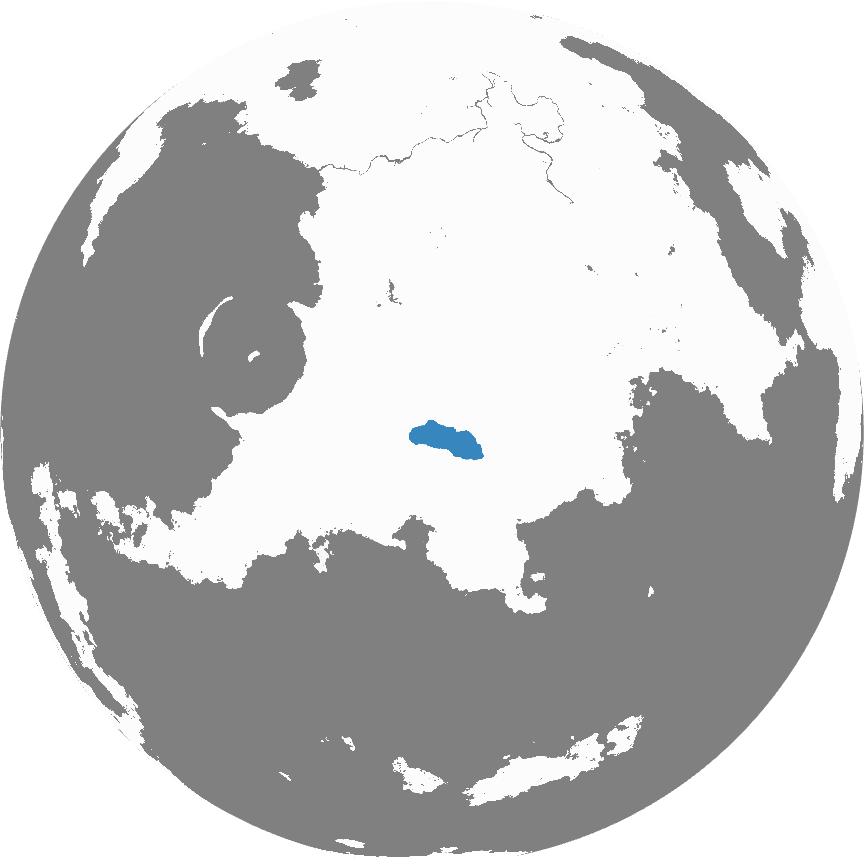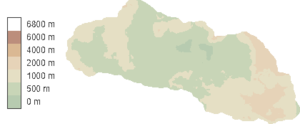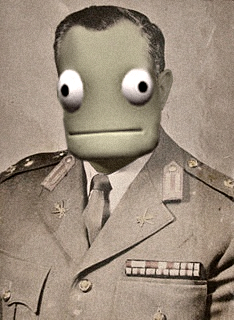Puge-Tatar: Difference between revisions
No edit summary |
No edit summary |
||
| Line 20: | Line 20: | ||
|mapdesc= |
|mapdesc= |
||
|predecessor=[[Vanadia]] |
|predecessor=[[Vanadia]] |
||
| − | |successor=}} |
+ | |successor=[[Wardia]]}} |
| + | Puge-Tatar is a Principality in the Kolus desert that existed from 2059 to 2137. |
||
==Etymology== |
==Etymology== |
||
<nowiki>###</nowiki> |
<nowiki>###</nowiki> |
||
| Line 77: | Line 78: | ||
South San Miguel capitulated to Puge-Tatar within the week. As a result, South RSS agreed to give the city of Cabo San Miguel to Puge-Tatar, as the goal of the invasion was to ensure the safety of the ethnic Putaryans there. |
South San Miguel capitulated to Puge-Tatar within the week. As a result, South RSS agreed to give the city of Cabo San Miguel to Puge-Tatar, as the goal of the invasion was to ensure the safety of the ethnic Putaryans there. |
||
| + | === The Fall of Puge-Tatar === |
||
| + | Like the stock market in 2136, the food crop in Zokesia was the third bumper harvest in a row. Record output was still climbing as the nation swelled, even as farmers began reporting losses, due to the high volume of product sold relative to demand. And then, in the Summer of ‘37, high winds from Vanadia carried a dust storm as large as Puge-Tatar westwards. It blanketed all the major crop production on Kolus, and suffocated the already struggling economies of the smaller nations there. |
||
| + | Unable to prop up their subsidiaries like before, Zokesia could do nothing but watch the Confederation states collapse into anarchy - Puge Tatar, Wuste, and Juno all falling into history in less than 6 months. Zokesia herself barely held on, but millions went hungry through the winter of 2138 as inflation and famine set in hard. The once fertile lands of Southern Zokesia were dust; farmers, factory workers and middle class businessmen were begging on the streets for pennies. Puge-Tatar natives either left to Zokesia, Foresti, or Phoenia, and it would be decades before anyone returned to the barren desert lands. Only the discovery of massive oil reserves in the area led Zokesian-sponsored settlers back, where the Federal State of Wardia was founded in its place. |
||
| − | ==Notable Events== |
||
==About The Flag== |
==About The Flag== |
||
[[File:Puge-Tatar flag.png|thumb|The Flag of Puge-Tatar. Black represents the Oil of the State of Tatar, Blue represents the water of the Oasis at Puge]] |
[[File:Puge-Tatar flag.png|thumb|The Flag of Puge-Tatar. Black represents the Oil of the State of Tatar, Blue represents the water of the Oasis at Puge]] |
||
Revision as of 20:48, 19 November 2022
|
State of Puge-Tatar
|
|||||
|---|---|---|---|---|---|
 |
|||||
| Motto | "Tamam olacaqdır" | ||||
| Common Name | Puge-Tatar | ||||
| Anthem | "Sanctum'u Qaldırın" | ||||
 |
|||||
| Official languages | Zokesian, Vanadi | ||||
| Currency | Zokesian Thaler | ||||
| Politics | |||||
| Capital | Weisst | ||||
| Government | Tribal Monarchy | ||||
| Foundation | 2059 (Proclaimation) 2060 (Declaration) 2089 (Current Constitution) |
||||
| Preceded by | Vanadia | ||||
| Followed by | Wardia | ||||
| Demography | |||||
| Ethnicities | Pugaryan 97% Other 3% |
||||
| Population | 1,363,632 | ||||
| Area | 3,590km² km² | ||||
Puge-Tatar is a Principality in the Kolus desert that existed from 2059 to 2137.
Etymology
###
Geography
Puge-Tatar is a nation located within the interior of Kolus Bordering Nuvalka to the North and East, Zokesia to the West, and Kothen to the south.
Climate
A primarily desert and steppe nation, its population lives on herding of cattle, sheep, and goats and in the small areas of water around the Oasis at Weisst.
Biodiversity
###
Urban Areas
###
Politics
Government
Puge-Tatar was founded under the rule of Prince Donuz I'l Sil, who ruled from 2060 to 2099. His son, Taryets I'l Sil, the current ruler, was crowned Prince upon his father's death. He operates Puge-Tatar as a kingdom under the protection of Zokesia and Guarentee of Aontas.
Subdivisions
The Prince governs the nation and answers to the eight Tribal Leaders of the states, who are revered as the heads of their families and take care of the people under their protection. They raise the local police force if needed and administer large tracts of land for the Prince.
Foreign Relations
###
Demographics
Languages
###
Education
###
Religion
###
Age
###
Military
The Puge-Tatar D'alawar (Defense force) is comprised of four elements: The Eraso Azkarra or "Fast Strike" force, consists of 3 squadrons of x10 Badger '93s. The Guardia Zaharra (Old Guard), sometimes known as the "Silk Skins" operate 10 Rhodie IX tanks and 5 Buckshot II AAA vehicles. The 10th. SS "Putaryien" division is a Federation of Zokesia volunteer division made up of Putaryans, control of which is given to Puge-Tatar in times of war. Finally, the Air Force is comprised of 20 Z-80 fighters of Zokesian origin.
Economy
Taxation
###
Transport
###
Energy and Infrastructure
###
Trade
###
Science
###
History
Independence
After years of stagnation and economic collapse, the people of Vanadia's Western regions rose up and declared their independence. In the following Vanadian War, Sanctum forces retreated following the battle of Ethos Hill pending Operation Steel Sky. In the days following the battle the remaining rebellious forces in the north and south of Vanadia sued for peace with the government allowing for the creation of the Principality of Puge-Tatar.
Ba'allzat Offensive
In 2099, the nation of Puge-Tatar, despite the rest of the Zokesian Federation's neutrality in the Baskian crisis, threw its support for North Salvacion following concerns for the Putaryen population in the South. The force is funded by the Crown Prince Donuz I'l Sil and was personally led by his son, Taryets I'l Sil.
The trans-bastian road was a desolate strip of highway in the middle of nowhere. Stretching almost 100 miles from Kothen to Salvacion, the road once was the highway through a bountiful nation. Now, all that was left are ghost towns and meager settlements of prospectors. It was rare to see vehicles on the road due to the heat. But one sweltering day in 2099, a massive armored column rolled down the road, kicking up the dust for miles around. Overhead, state-of-the-art fighters flew along both sides of the road, armed to the teeth on combat patrol covering the armored vehicles driving along in excess of 60 miles an hour. The column contained the backbone of the Puge-Tatar Defense force, the Silk Skins, among them a few veterans of the original war of independence - even as pensioners they were too proud to stay home when their nation went to war. As the planes touched down in Salvacion and the tanks began parking southeast of the main airstrip and setting up camp, the soldiers of Puge-Tatar got their first taste of deployment and many were eager to sightsee the city. Locals came out with what little food they had to spare to greet the Putaryans, who were more than happy to enjoy a bottle of Krazj and smoke cigarettes.
In the cool morning hours, Puge-Tatar divisions began rolling out of their staging areas along the defensive bunker complex of Salvación, headed south. In the west, the "Silk Skins" of the Puge-Tatar D’alawar aimed their sights on the smoldering ruins of sector 15, expecting fierce resistance from the urban defenses. In the east, the 10th SS. "Putaryan" was tasked with capturing Bonatillo, a strategic target in crippling the South's economy. The offensives planned goals were on the flanks of the lakes to the north of New San Miguel, to ensure a foothold on the South and put the army within striking distance of the capitol. Air cover in the form of Z-80s and Z-90s flew probing flights to cover the ground forces and ensure the line between the two forces was not broken.
The forces of the Puge-Tatar D’alawar rolled into South RSS with little resistance, with the mercenaries hired by Nuvalka apparently recalled from their posts to mediate the invasion of Carsodonia. What Salvacion troops did show up placed their feet in the sand and dug in, throwing up a hasty but effective defensive line in the desert. The air force, however, was less than effective. Fielding Surnay surplus aircraft, many of which were not in flying condition, were scrambled to defend against the newer Z-80s of the Puge-Tatar D’alawar. In a series of air battles over the border, 6 Putaryan fighters were lost while fifteen of the enemy's were accounted for, leaving them with less than a dozen nonflying craft. Once the skies were clear, Z-90s flew in to strike strategic AAA sites, tanks, and any other targets of interest. On the ground the Silk Skins and 10th. SS "Putaryans" struck with swift force, using long range rocket strikes to anniahlate masses of enemy armor and then advancing to finish the rest of the defenses off with lighter arms fire. Many troops of South RSS threw up their arms and surrendered at the sight of such awesome artillery, and by the end of the two week campaign the forces of the D’alawar had accomplished their goals in the first thrust; the capitol lay open and the rest of the nation was at their fingertips.
South San Miguel capitulated to Puge-Tatar within the week. As a result, South RSS agreed to give the city of Cabo San Miguel to Puge-Tatar, as the goal of the invasion was to ensure the safety of the ethnic Putaryans there.
The Fall of Puge-Tatar
Like the stock market in 2136, the food crop in Zokesia was the third bumper harvest in a row. Record output was still climbing as the nation swelled, even as farmers began reporting losses, due to the high volume of product sold relative to demand. And then, in the Summer of ‘37, high winds from Vanadia carried a dust storm as large as Puge-Tatar westwards. It blanketed all the major crop production on Kolus, and suffocated the already struggling economies of the smaller nations there.
Unable to prop up their subsidiaries like before, Zokesia could do nothing but watch the Confederation states collapse into anarchy - Puge Tatar, Wuste, and Juno all falling into history in less than 6 months. Zokesia herself barely held on, but millions went hungry through the winter of 2138 as inflation and famine set in hard. The once fertile lands of Southern Zokesia were dust; farmers, factory workers and middle class businessmen were begging on the streets for pennies. Puge-Tatar natives either left to Zokesia, Foresti, or Phoenia, and it would be decades before anyone returned to the barren desert lands. Only the discovery of massive oil reserves in the area led Zokesian-sponsored settlers back, where the Federal State of Wardia was founded in its place.




